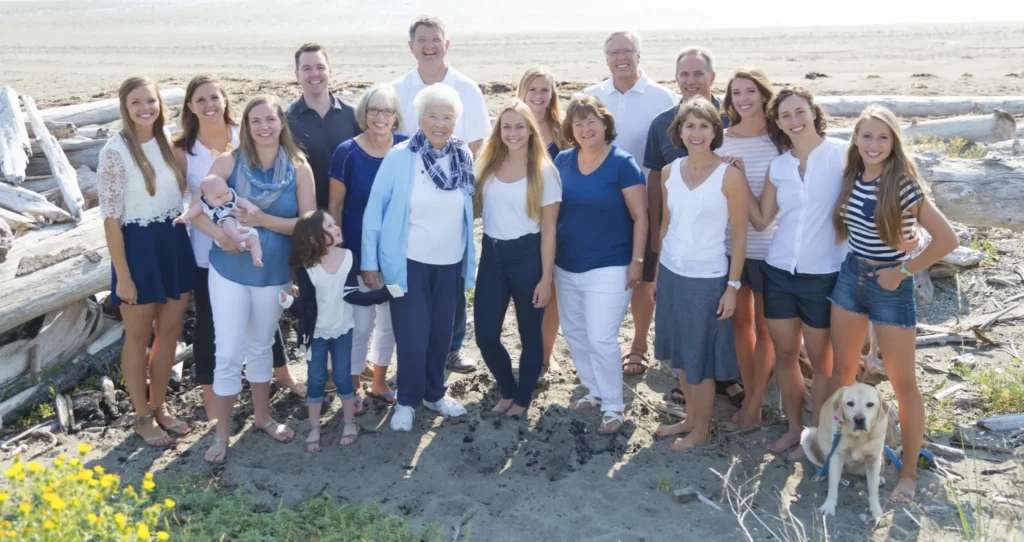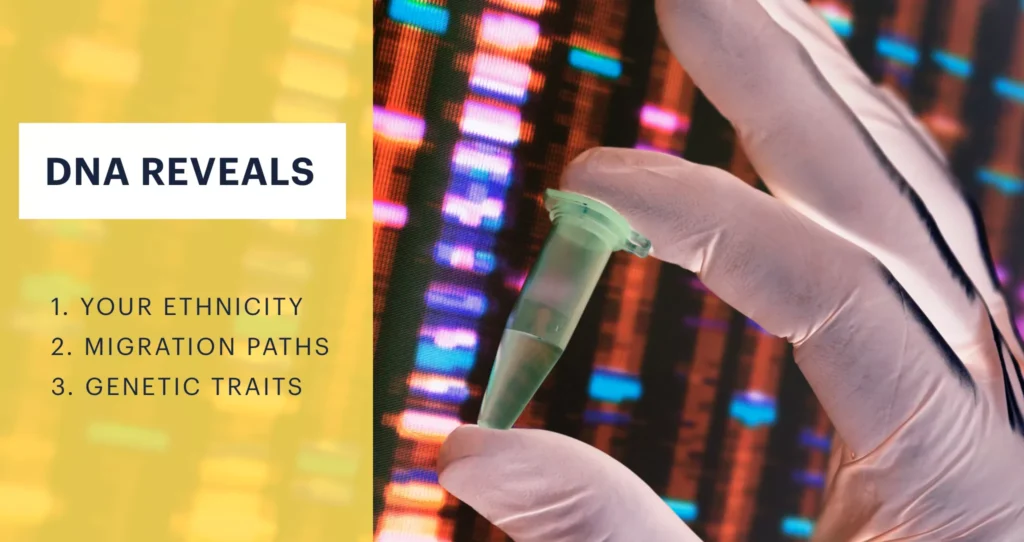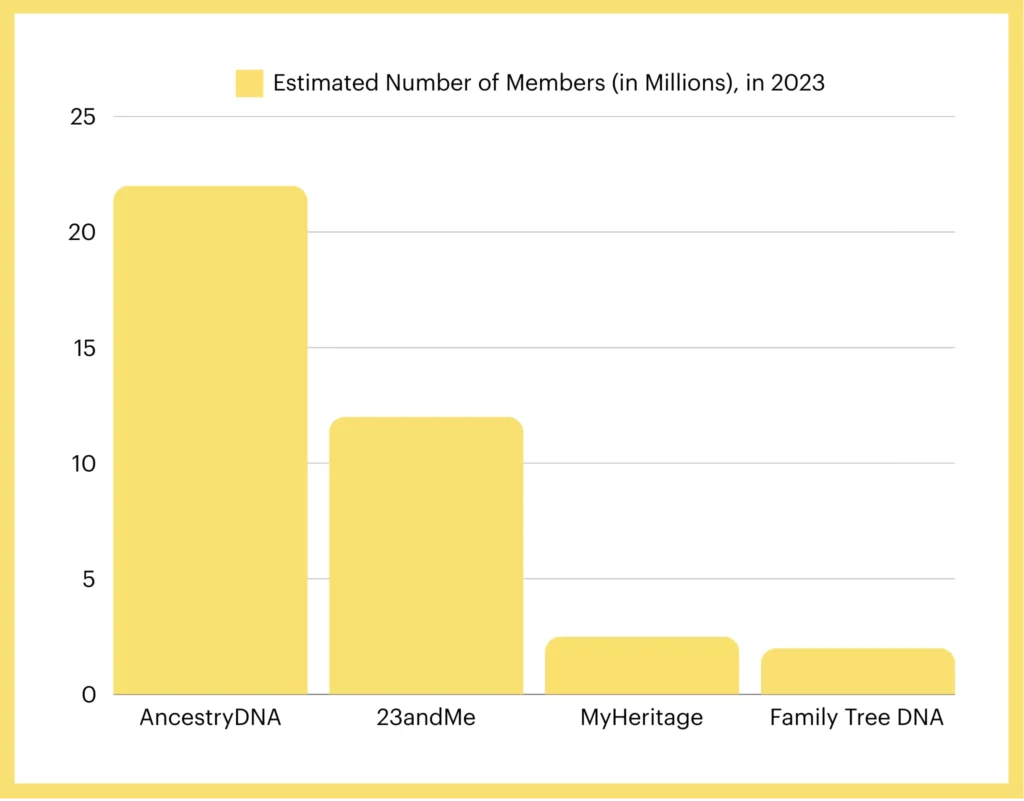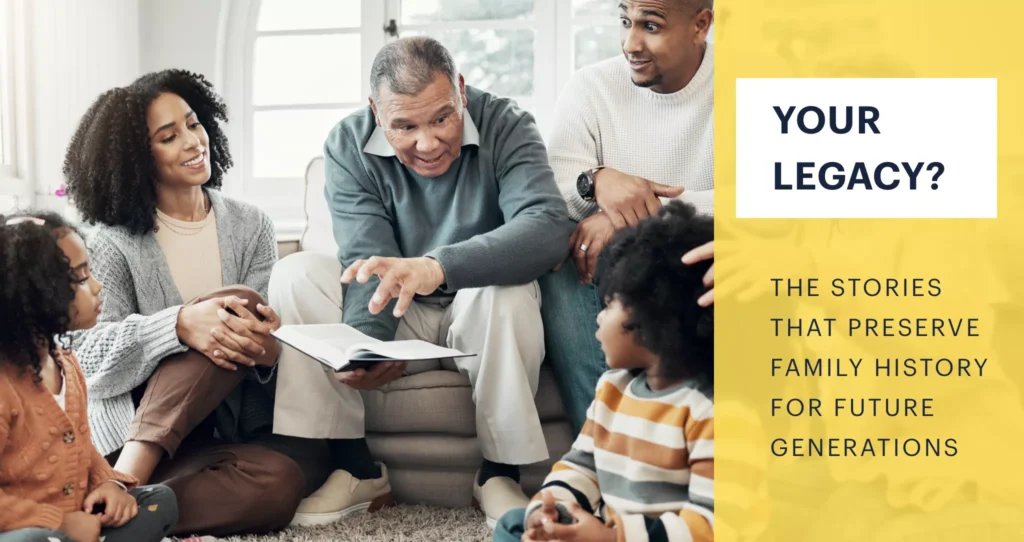Family DNA Tests: Getting Started Guide
Family DNA tests are increasingly popular, with an estimated 50 million people taking them from the comfort of their own homes. Their popularity isn’t surprising—these tests offer fascinating insights into our genetic heritage with just a cheek swab or saliva sample.
In this introductory guide to family DNA tests, we’ll explore what these tests actually reveal about your ancestry, how you can get one, how they can connect you with living relatives, and what limitations you should be aware of. We’ll also examine how DNA testing fits into the broader picture of preserving your family’s true history for generations to come.

Jump to section:
- What are Family DNA Tests?
- The Testing Process
- Finding Relatives Using Family DNA Tests
- Chances of Finding a Living Relative
- What Else Can Family DNA Tests Tell You?
- Comparing Popular Family DNA Tests
- Combining DNA and Family Genealogy
- Limitations of DNA and Family Genealogy
- A More Complete Approach to Family History
- Overview of Family DNA Tests
What are Family DNA Tests?
DNA stand for the tongue-twister—’deoxyribonucleic acid’. This is the unique genetic code found in almost every cell in your body. Think of it as your personal biological blueprint, as it gets passed down from generation to generation.
Family DNA tests use this ‘biological blueprint’ to learn about your ancestry and relatives. Despite the technical sounding name, these tests are surprising simple and can be done at home. All they require is a small saliva sample or cheek swab that you mail back to the testing company. Within weeks, you’ll receive your results.
As this article will explain, family DNA tests can provide life-changing insights into your family, but they will not be able to produce your family tree or list your ancestors’ names. If you are interested in building out your family tree, you will need to use family genealogy sites.
The Testing Process
Getting your DNA tested is remarkably simple:
- Order a kit online: Most companies deliver directly to your door within a few days. We’ll provide links to the best websites shortly.
- Provide your sample: Simply spit into a tube or swab the inside of your cheek (similar to COVID tests) to collect your DNA.
- Mail it back: Use the pre-paid packaging to return your sample to the testing lab.
- Wait for results: Typically in 3-6 weeks, you’ll receive an email when your results are ready to view online.
Finding Relatives Using Family DNA Tests
Your living relatives share DNA. You and your parents share 50% of the same DNA. You share up to 50% of your DNA with your brothers or sisters. And if you have a half-brother or half-sister, you share up to 25% of your DNA.
As a result, close relationships up to 2nd cousins are relatively easy to identify using a DNA test. When you submit your DNA sample, they compare your genetic markers with those in their database. When they find matching DNA patterns with other users, they can suggest possible family relationships.
To stand a chance in finding relatives using DNA:
- Both you and your relatives have to do a DNA test.
- You all have to share your DNA results in the SAME database.
If either step is missing, you simply won’t find each other.
Chances of Finding a Living Relative
So, what are the chances that both steps one and two above will be completed?
Research by FutureMarketInsights shows that 90% of direct-to-consumer DNA tests are used within the US. So if your living relatives are abroad, your chances are vastly reduced.
A YouGov survey in 2022 revealed:
- Two out of ten Americans say they’ve taken a DNA test.
- 24% of White Americans have taken a DNA test, compared to 16% of Black Americans and 16% of Hispanic Americans.
- Americans aged 65 and older are nearly twice as likely to have taken a test than those under 30.
- 45% of Americans would consider taking a DNA test if it was free. But 33% were not interested, and 22% were not sure.
Together, these statistics show that finding relatives through DNA testing requires a spot of luck. Your best chances are with white Americans over the age of 65, as they’re the demographic most likely to have taken a test.
What Else Can Family DNA Tests Tell You?
Beyond finding relatives, family DNA tests can give you some pretty fascinating insights about your family heritage. While each testing service offers slightly different features, most provide these key pieces of information:

- Your Ethnicity: Which part of the world do you originate from? You’ll learn what percentage of your DNA comes from different regions—you might discover origins far from home in places like Africa, Ireland or South America.
- Migration Paths: How has your family moved across the globe over centuries? Many services use your DNA to create visual timelines showing your ancestors’ geographical movements throughout history.
- Genetic Traits: How does your DNA influence your appearance, personality, and health? Tests can reveal interesting connections between your genes and various physical and behavioural characteristics.
Comparing Popular Family DNA Tests
Over 90 companies are providing at-home DNA test kits. Even if you’re lucky enough to have a living relative who shares their DNA in an online database, you must submit your results to the same database to find a match.
So which service should you choose?
Each company offers different features, but if you’re mainly interested in finding relatives, the size of their user database matters most. Statistics compiled by knowyourdna.com show that AncestryDNA has a significantly larger database than 23andme, MyHeritage and Family Tree DNA:

If finding living relatives is your priority, AncestryDNA’s much larger user base makes it the clear frontrunner. The bigger the database, the better your chances of finding a match.
From the pricing point of view, while there are variations, especially if you can get a promotion, a DNA test costs less than $100.
Combining DNA and Family Genealogy
When you pair DNA testing with traditional genealogy research, you get a much fuller picture of your family history.
Using family genealogy sites you can access vast online databases to gradually populate your family tree with names, dates and places of interest.
Here’s how DNA testing and genealogy work together:
1. Find lost or unknown relatives
Traditional genealogical research hits a wall with missing family members—like those who were adopted or estranged. DNA testing can bridge these gaps by matching you directly with these relatives or with their family members who can connect you.
2. Verify familial relationships
Sometimes you’ll suspect someone belongs in your family tree, but can’t find documents to prove it. DNA testing provides biological confirmation when physical records can’t prove it.
3. Find other genealogists within your family
Many DNA testers are already building their own family trees. If you match with a distant cousin who’s done extensive genealogy research, they might share valuable information about family members you knew nothing about.
4. Expand your search globally
Genealogical research in your country may fail to yield the desired results. Your DNA results might suggest other countries. With this information, you can expand your genealogical search beyond the home country.
As you can see, there’s a lot to be gained from combining DNA tests with genealogical research, but one key ingredient remains missing for family history enthusiasts…
Limitations of DNA and Family Genealogy
Discovering your family roots through genealogy or DNA will be fascinating. But these methods can’t satisfy your deeper desire to truly know who your ancestors were as people and what they experienced in life.
These two research methods might tell you where your great-great-grandmother came from, but the most interesting details are likely to remain a mystery:
- The things they did in their daily life.
- Their views on world events (e.g. inventions, cultural changes, wars).
- Their personality, beliefs and values.
- Their aspirations and dreams for the future.
- Their challenges and setbacks.
- Their education, talents and achievements.
These insights form the true foundation of your family history. Ancestors’ experiences, thoughts and beliefs are arguably far more interesting for dependents than just their names and dates on a family tree.
This is why the most valuable legacy you can leave for future generations is your life story, told in your own words.

Imagine if your descendants could experience your personality, wisdom, and life journey through stories, photos, videos, and voice recordings. That connection across time is a truly priceless gift—one that no DNA test or family tree can provide.
A More Complete Approach to Family History
While DNA tests and genealogical research offer valuable insights, they’re just the beginning of preserving your family history. The most complete approach partners scientific facts with something more meaningful—your family’s real-life stories.
Stories form the backbone of all history. Look at any historical text—it’s filled with stories, supported by dates and data. Similarly, DNA tests and genealogy provide a framework for your family’s history, but real-life family stories bring that framework to life by revealing character, values, and lived experiences.
But where can you preserve such stories about your ancestors? And why only focus on the deceased when you can preserve far more vivid stories about your family’s living history? After all, one day we’ll all be someone’s ancestors, so why not capture our stories as we live them?
Here are 8 ways to record family stories, ranging from diaries to digital storytelling platforms. When my family wanted to preserve our family’s stories, we found challenges with every approach:
Traditional journals couldn’t include our digital content. Cloud services like Google Drive felt too clinical. Photo books were briefly enjoyed, then shelved. Ancestry.com wasn’t right for stories about living relatives. And photo-sharing platforms are not great at sharing anything other than photos.
So we built Simirity to give an alternative option for families like ours.
Simirity is your family’s journal of cherished memories.
Beyond photos, videos and voice notes, Simirity uses real-life stories from your family’s past and present to enrich family relationships while storing cherished memories for tomorrow.
Your stories blossom into rewarding conversations that take your family beyond everyday small talk—creating moments of genuine connection that you’ll treasure forever.
Ready to see how families capture living history beyond facts and dates? Browse our demo account and imagine preserving your family’s real character, experiences, and stories as they unfold—plus capturing precious memories from living family members before it’s too late.
Overview of Family DNA Tests
As we’ve seen, family DNA tests offer a simple and meaningful way to begin exploring your family’s history. However, if your ultimate goal is to fully explore and preserve your family’s history, there are several aspects to consider:
- DNA testing offers insights into your genetic heritage and potentially connects you with living relatives.
- Genealogy research provides the framework of names, dates, and relationships in your family tree.
- Personal stories and memories bring your ancestors to life, preserving the essence of who they truly were.
The most complete approach combines all three.
While names and dates may interest future genealogists, it’s your stories that your descendants will really cherish. Knowing not only who their ancestors were, but also how they lived, loved, and overcame challenges, is a gift no other legacy can match.



